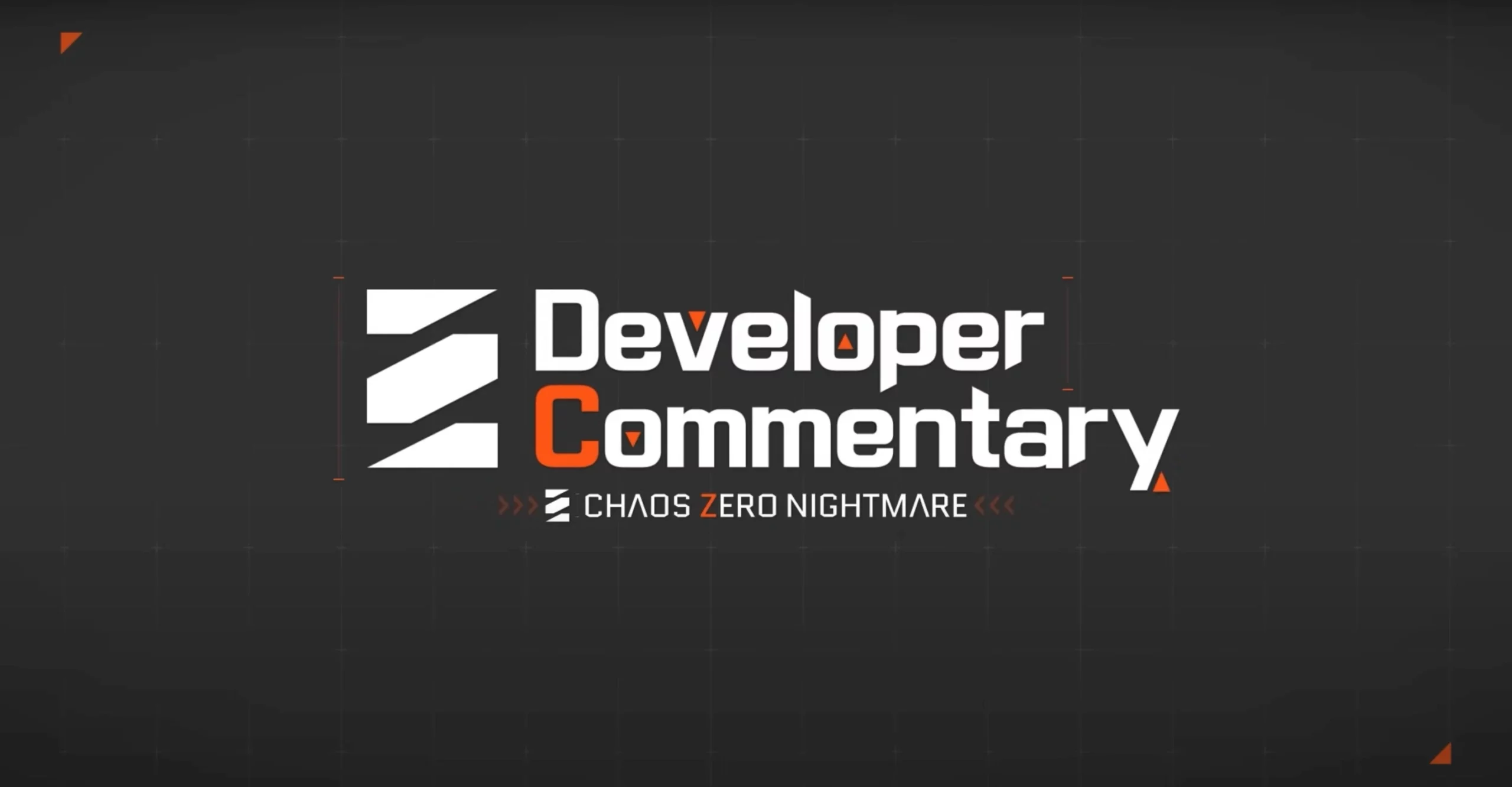
Chaos Zero Nightmare – Developer Commentary (Episode 1) Summary
In this new Developer Commentary episode, we get to hear from a background artist, character artist, script writer, and combat designer in a Q&A format.
Q: Who is best girl?
The combat designer and script writer choose Renoa for her love of poetry and her compassion beneath her cold exterior—but the character artist calls them out for not admitting to spicier options like Yuki, Haru, and Maribell. The background artist protests and admits he likes cat girl Magna more. Looks like CZN has no shortage of girls to choose from!

Q: Who do we play as?
Agents from the SS Nightmare refer to us as the Captain, but to non-agents, we are the Protos.
Q: What makes CZN stand out from other gacha games?
- Special effort put into camera movement
- 3D elements in stage backgrounds
- High quality 2D animations both in and out of combat
- Affinity mechanic to bond with agents
Q: Why chibi sprites for combat and not Live2D?
The developers want the characters to feel small next to the monsters you are fighting in the game. They tried full-body Live2D models at first, but if you shrink them down, the faces are too hard to see.
Q: Is the dark fantasy genre too niche?
It definitely can be, but CZN’s dark dystopian setting aims to carve out its own niche by doubling down on the darkness to appeal to players who like its intensity. The [Fatal] sequence, which plays when you lose a stage, is especially grim. CZN also features a [Trauma Code] system that allows you to delve into each character’s tragic past.
Q: What if this is too dark for players?
The game isn’t purely dark content—there are cafés, schools, shopping centers, and even a hot spring to contrast with the intensity of combat.
Q: Isn’t the amnesia trope overused?
It’s used a lot so the player and main character start with the same baseline knowledge. CZN takes this a step further as Protos characters never lose their memories, so this is a massive anomaly in the setting.
Q: Are Kayron and his secretary together?
The developers assure us that every agent’s relationship with the Protos is the most important.
Q: How does Chaos contribute to gameplay?
The game features a lot of different occurrences thanks to the rogue-like genre, and Chaos amplifies the craziness of each encounter. You can encounter gods and get pulled into unknown spaces.
Q: What went into the background design?
The developers focused on rendering the gloomy atmosphere with low-saturation colors. Some stages feature traffic lights that flicker ominously. They also incorporated the Cthulhu Mythos and referenced Scorn in gameplay.
Q: What can you tell us about the lore and storyline in areas without Chaos?
The game features a variety of planets and spacecrafts. Speitz is an ancient kingdom of a long-lost alien race. CZN’s sprawling sci-fi setting allows the developers to explore all kinds of storylines in a wide range of locations.
Q: Does the combat change from region to region?
The monsters in each area belong to particular factions and you get different rewards for beating them. The high amount of regions was a lot of work for the background art team. They started with about 28 maps, but this number quickly ballooned to 120 in-game locations!
Q: Why did you decide to go with the breakdown system?
Every agent has their own traumatic backstory and thus experience different types of breakdowns when exposed to stress. The developers wanted to show human resilience in the face of adversity through the breakdown system. Characters acquire [Ego Skills] when exposed to a high amount of stress; these skills lower in cost when a character overcomes a breakdown. The visual team put a great amount of effort into making each breakdown unique. They even got so into drawing each expression that they started making them while drawing.
Q: Why did you choose a card system?
It’s very straightforward and a great way to do strategy.
Q: What’s the most important part of combat design?
Right before you play a card, the game displays a preview of the card’s effects. Communicating each effect was important to the developer team as it’s important for player strategy?
Q: What’s the target audience?
The main target audience is strategy game players, but the developers want to attract a wide range of players with varying degrees of skill. There’s a lot of room for skill expression, but the barrier to entry is very low.
Q: Is there any auto-battle?
There’s no auto-battle for the main rogue-like mode, but farming dungeons will feature auto-battle.
Q: How difficult are battles in CZN?
It really varies between dungeons, but there are very difficult dungeons aimed to challenge experienced deck builders. At the same time, the developers wanted to lower the skill floor by providing lots of guides. Trauma code features a fixed deck so you can learn how a character operates, and there are many more areas that serve as learning experiences.
Q: What unique cards or synergy effects are available in CZN?
Magna is a counterattack character who deals even more damage if the enemy’s attack is completely blocked by shields.
Q: What languages will be available on the final release?
The game will feature both Korean dub and Japanese dub, while in-game languages will feature Korean, Japanese, English, and Traditional Chinese. The main story is fully voiced in both Korean and Japanese.
Q: How close is CZN to completion?
The character art team is about 95% done, while backgrounds are 90% done. Combat, characters, monsters, and level design are currently in the polishing phase.
Finally, this is only the first part in a series of developer commentary videos, so you can look forward to more content in the future. Also, Amir will be available to all players through pre-registration and they’re giving away some free merch if you give feedback about the video!